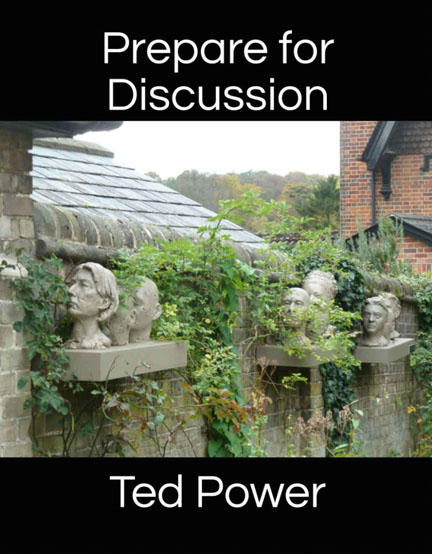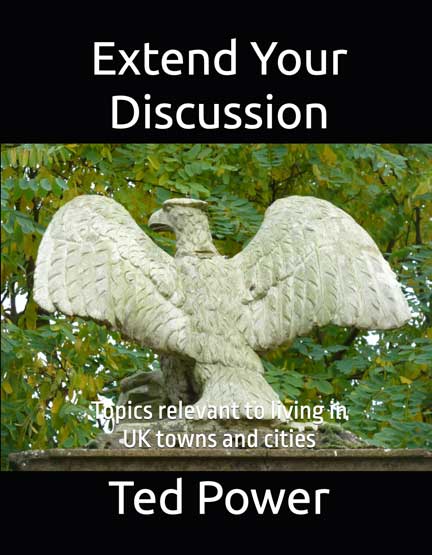The planning system (page 55)
Many people are bored by planning until there is a planning application to build in the vicinity of their homes. Then they discover that their county or city has a planning register where they can search for the new proposal and read the supporting documents.
It is best to look at the application form first since it obliges the developer to give details of exactly what is proposed. The Design and Access Statement is generally user-friendly, but it will speak up for the development, often skating over the points which will impact on neighbours. It is therefore important to look at the drawings, which are usually more exact.
Neighbours are generally worried by the proximity of new development, which can involve overlooking, overshadowing and the potential for unwanted noise.
The Council's planning register will provide a facility for online comments, which can comprise objections, comments in support of the application, or comments neither in support nor objecting. Your personal details will not be revealed, though these comments will be available for all to see.
Each application will have a case officer whose job is to consult different Council departments and to write a report. The report will analyse whether the new proposal is compatible with the policies in the Council's Local Plan and will summarise the comments for and against the application.
Before writing objections it is always a good idea to familiarise yourself with these local policies as well as those in the National Planning Policy Framework. An objection informed on the basis of planning policies, such as Protection of Amenity, is likely to be valid. Protection of a private view is not a valid consideration, though long views in and out of a conservation area from public vantage points do qualify as valid.
The opportunity to comment is usually open for three weeks from when the application is registered. Applications with five or more objections usually go before the planning committee, especially if your local ward councillor asks for this to happen. The case officer's report will contain a recommendation of whether to grant or refuse the application. Planning committees consist of up to a dozen ward councillors, which allows elected representatives to make decisions. They do not have to follow the case officer's recommendation, though in most cases they do.
If an application is approved, objectors do not have the right of appeal, though if it is refused, the developer can appeal against refusal. The appeal process involves a planning inspector who represents the government. If the appeal is dismissed, then the developer or appellant pays the cost of the appeal. However, if it is upheld, then the Council (i.e. the ratepayer) foots the bill.
Comprehension questions on the planning system (page 88)
¶1 At what point do many people start to take an interest in the planning system? Where should they look to find the details of a planning application?
¶2. What is the problem with Design and Access Statements when you want to know the details of planning applications?
¶3. Name three of the worries which residents have when a proposal for new development affects them?
¶4. When you make an online objection to a planning application, is your identity revealed to the developer?
¶5. What is the job of the Case Officer in relation to planning applications?
¶6. What steps should you take if you want your objection to a planning application to count?
¶7. Where do the members of a planning committee come from? Are they elected? Do they have to follow the case officer’s recommendation in making their decision?
¶8. Do residents have the right to appeal against a decision to approve a planning application? Why do Councils have to take the possibility of a successful appeal into account before refusing development proposals?
How and why do I use short texts in the lead up to discussion?
Short texts are used in a number of ways. See Teaching spoken language in the English language teaching section of this website. However, both Prepare for Discussion and Extend Your Discussion use short texts as an introduction to each topic and to contextualise much of the core vocabulary associated with each topic as an example of use. I key these words and phrases into the texts in bold print to draw attention to them.
The page numbers show that I have deliberately located the short texts and the comprehension questions relating to them in different parts of the book. This allows listening comprehension practice where the teacher reads the short text aloud while the students look only at the comprehension questions. Alternatively, the separate sections may be used for reading comprehension and pair work with one student looking at the text (on page 55) while his or her partner asks the comprehension questions (on page 88). Another way of using the material is to challenge the students to answer the questions on page 88 before they have seen or heard the short text on page 55. This tests both prior knowledge of the topic and adds interest by involving anticipation.
It may be helpful to students if the teacher tells them that the comprehension questions are numbered according to paragraphs (¶1, ¶2, ¶3 etc) in the short texts where the answers can be found.
An earlier title for Prepare for Discussion was Dictate and Discuss. I retreated from this since dictation is not popular with all teachers and learners. I still contend that dictation remains a useful way of testing listening comprehension as well as writing skills such as spelling and punctuation. Learners may recognise words when they see them in a text, but may find difficulty in recognising them when they hear them only. Some of the short texts (such as the sample one above) are longer than others. Teachers should feel free to dictate parts of texts or merely ask learners to write down the core vocabulary which appears in bold print as a numbered list.
The short texts can also be used for marking in word and sentence stress. Although I have used a red pen in the example below, students can use a pencil so that corrections can be made. The teacher can help by reading the text aloud. Note that weak forms, usually short grammatical words, remain unmarked. By working in pairs, students can check their work together. As a final check, the teacher asks individual students to read paragraphs of the text aloud at normal speed using the appropriate stress and intonation patterns.
To mark the stress, place stress marks BEFORE each stressed syllables. The small grammatical words tend to be weak forms, so leave them unmarked. Example:
 Many
Many  people are
people are  bored by
bored by  planning un
planning un til there is a
til there is a  planning
planning  appli
appli cation to
cation to  build in the vi
build in the vi cinity of their
cinity of their  homes.
homes.  Then they dis
Then they dis cover that their
cover that their  county or
county or  city has a
city has a  planning
planning  register where they can
register where they can  search for the
search for the  new pro
new pro posal and
posal and  read the sup
read the sup porting
porting  documents.
documents.
| UK | US | DE | FR | ES | IT | NL | PL | SE | JP | CA | AU |

This book contains 28 short texts on the following topics: alternative beliefs, animal welfare, the arts, crime and punishment, cultural differences, economics, education, environment, fashion, health, holidays, language learning, male & female roles, marriage, the media, political systems, religion, rich world : poor world, science and technology, society, sport, traditions, transport, travel, violence, work and youth & old age.
The material should prove especially useful to learners intending to study in UK universities where they would be expected to participate in discussions covering a wide range of themes.
| UK | US | DE | FR | ES | IT | NL | PL | SE | JP | CA | AU |

This book contains 14 short texts on the following topics: art versus graffiti, climate change, community events, controlled parking zones, cost of living crisis, dogs, homes or open spaces, local history, neighbourhood disputes, the planning system, policing, refuse & recycling, residents associations and wildlife gardening.
The material is intended for learners of English at the upper-intermediate level and above who wish to improve their participation and performance in discussion of topics relevant to living in UK towns and cities.
Please take the links below for examples of the exercise types you will find in the books as well as my thoughts on the value of these exercises in teaching discussion
 Many
Many  people are
people are  bored by
bored by  planning un
planning un til there is a
til there is a  planning
planning  appli
appli cation to
cation to  build in the vi
build in the vi cinity of their
cinity of their  homes.
homes.  Then they dis
Then they dis cover that their
cover that their  county or
county or  city has a
city has a  planning
planning  register where they can
register where they can  search for the
search for the  new pro
new pro posal and
posal and  read the sup
read the sup porting
porting  documents.
documents.
